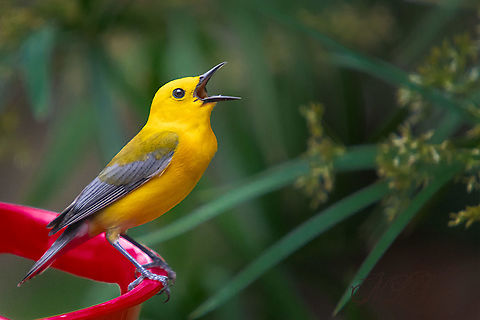
Appearance
The Prothonotary Warbler is 13 centimetres long and weighs 12.5 grams . It has an olive back with blue-grey wings and tail, yellow underparts, a relatively long pointed bill and black legs. The adult male has a bright orange-yellow head. Females and immature birds are duller and have a yellow head. In flight from below, the short, wide tail has a distinctive two-toned pattern, white at the base and dark at the tip.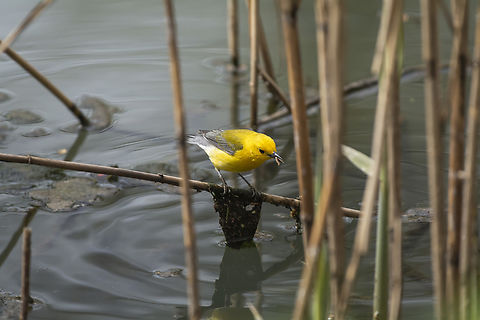
Distribution
It breeds in hardwood swamps in extreme southeastern Ontario and eastern United States. It winters in the West Indies, Central America and northern South America.It is a rare vagrant to western states, most notably California.
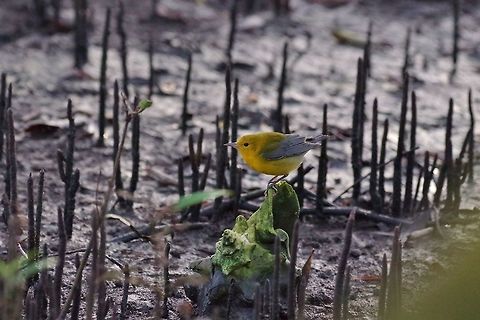
Status
These birds are declining in numbers due to loss of habitat. They are also parasitized by the Brown-headed Cowbird , or outcompeted for nest sites by the House Wren . It is listed as Endangered in Canada.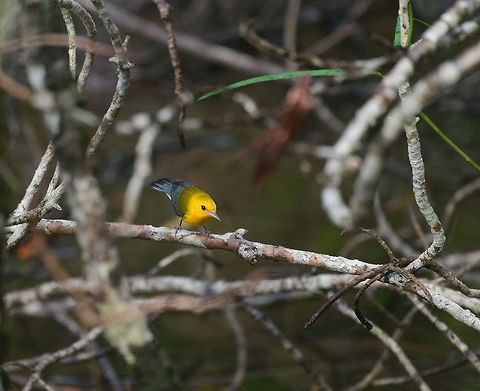
Behavior
It is the only eastern warbler that nests in natural or artificial cavities, sometimes using old Downy Woodpecker holes. The male often builds several incomplete, unused nests in his territory; the female builds the real nest. It lays 3–7 eggs.The preferred foraging habitat is dense, woody streams, where the Prothonotary Warbler forages actively in low foliage, mainly for insects and snails.
The song of this bird is a simple, loud, ringing ''sweet-sweet-sweet-sweet-sweet''. The call is a loud, dry chip, like that of a Hooded Warbler. Its flight call is a loud ''seeep''.
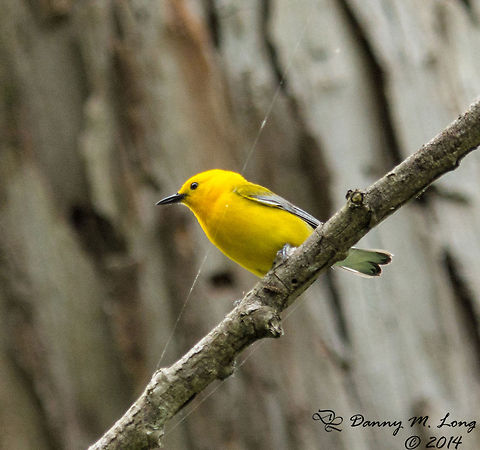
Habitat
It is the only eastern warbler that nests in natural or artificial cavities, sometimes using old Downy Woodpecker holes. The male often builds several incomplete, unused nests in his territory; the female builds the real nest. It lays 3–7 eggs.The preferred foraging habitat is dense, woody streams, where the Prothonotary Warbler forages actively in low foliage, mainly for insects and snails.
The song of this bird is a simple, loud, ringing ''sweet-sweet-sweet-sweet-sweet''. The call is a loud, dry chip, like that of a Hooded Warbler. Its flight call is a loud ''seeep''.
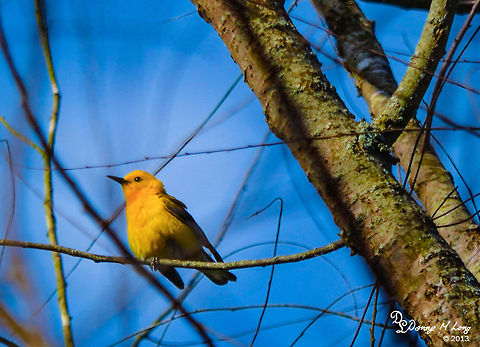
Cultural
This bird was named after officials in the Roman Catholic Church known as the protonotarii, who wore golden robes. It was once known as the Golden Swamp Warbler.The Prothonotary Warbler became known in the 1940s as the bird that, in front of the House Un-American Activities Committee, established a connection between Whittaker Chambers and Alger Hiss. Chambers had testified that Hiss enjoyed bird-watching, and once bragged about seeing a Prothonotary Warbler. Hiss later testified to the same incident, causing many members to become convinced of the pair's acquaintance.
This bird is mentioned in A Sand County Almanac by Aldo Leopold as the "[J]ewl of my disease-ridden woodlot", "as proof that dead trees are transmuted into living animals, and vise versa. When you doubt the wisdom of this arrangement, take a look at the prothonotary."
References:
Some text fragments are auto parsed from Wikipedia.